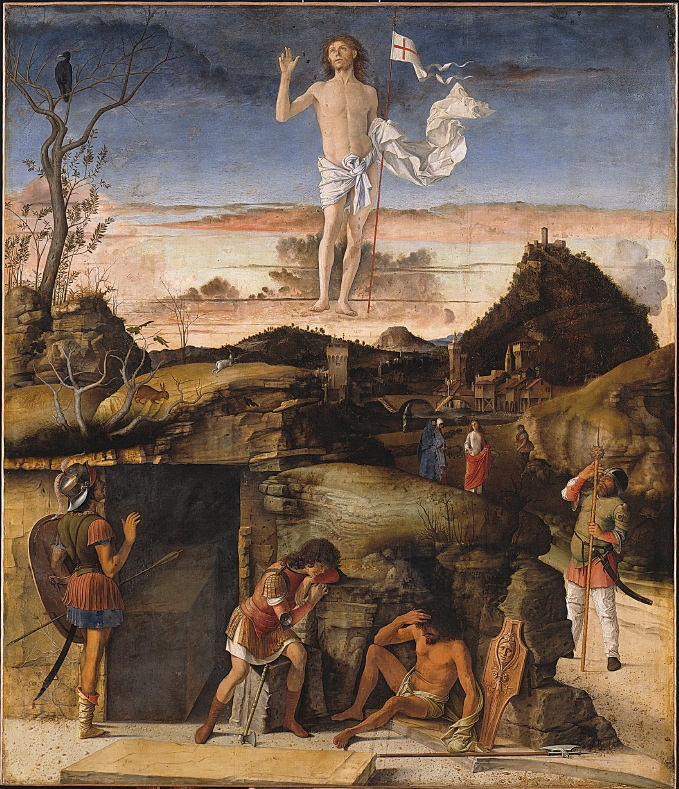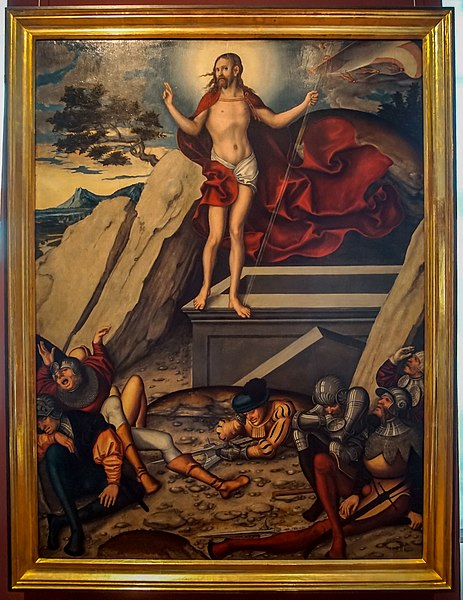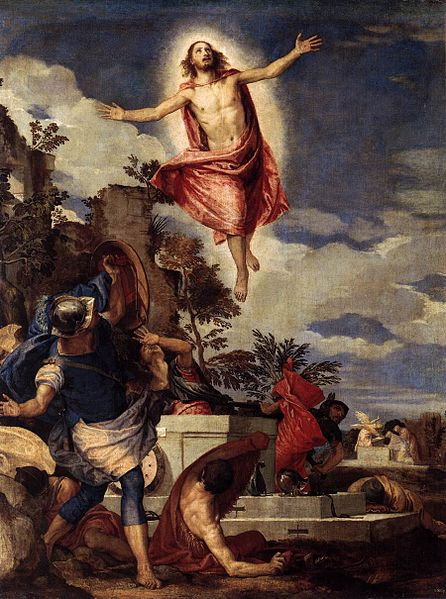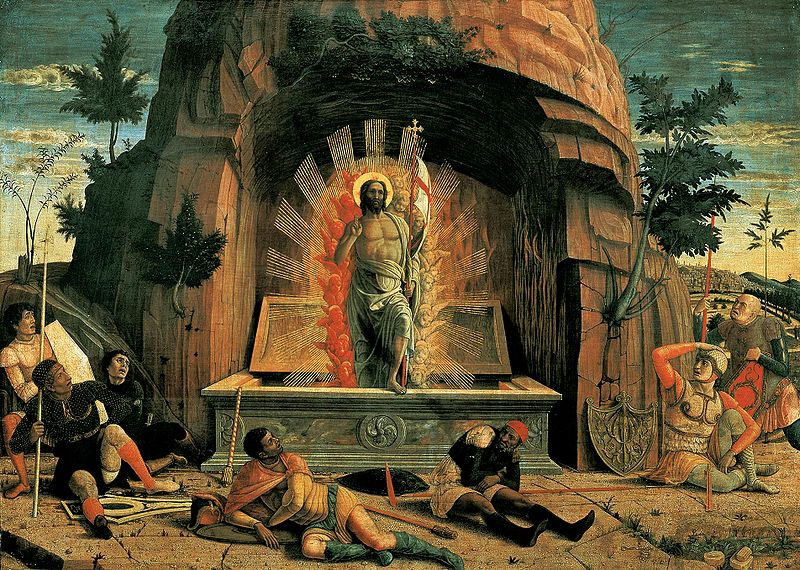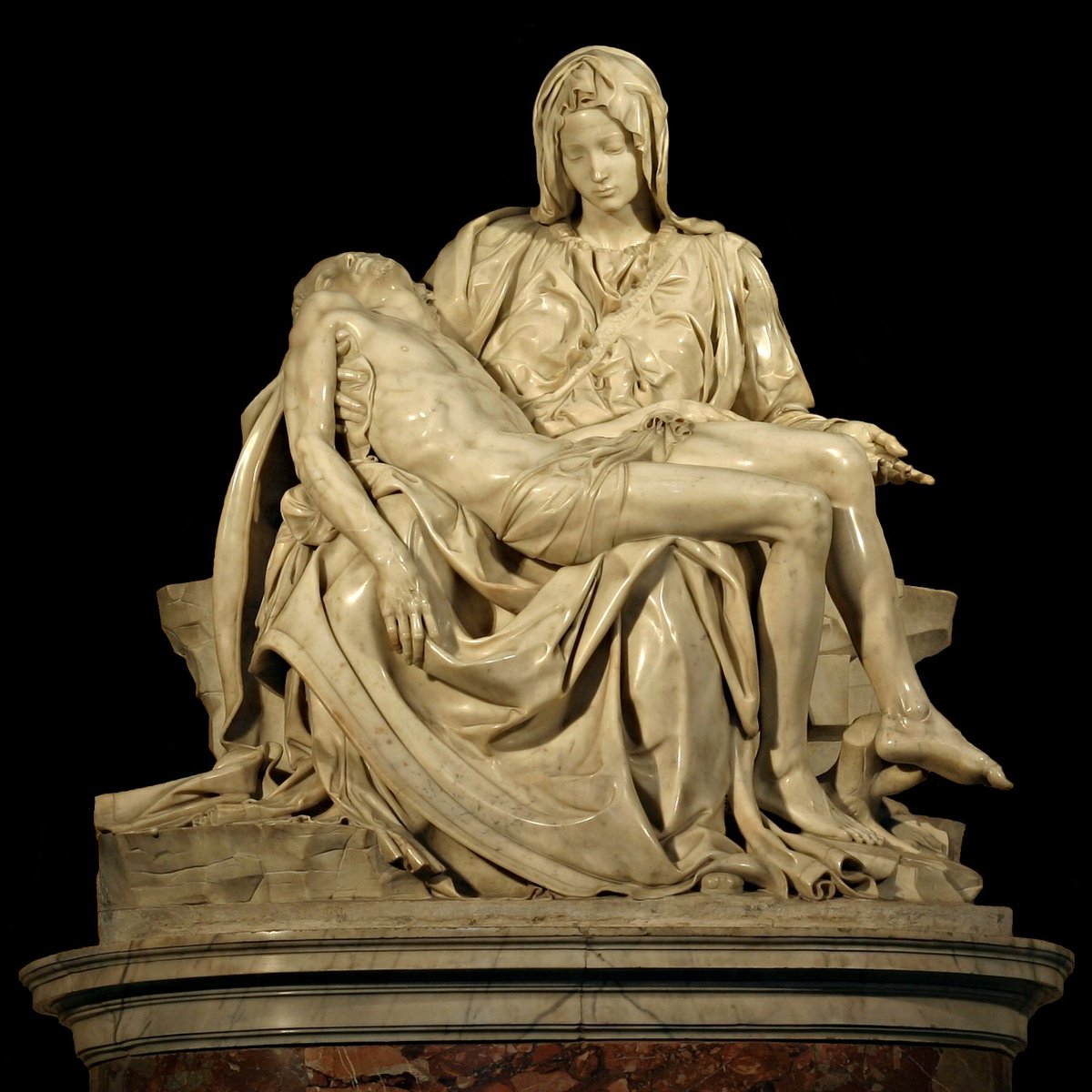Happy Easter! Choosing Renaissance art for today is both very easy (so many options) and very, very hard (so many options). Here are the standouts:
Giovanni Bellini, 1479. An open tomb, startled centurions, and in the distance, three women. It& #39;s Matthew 28:2.
Giovanni Bellini, 1479. An open tomb, startled centurions, and in the distance, three women. It& #39;s Matthew 28:2.
Hold on, why is this one centurion naked? All the others are wearing armor, but he& #39;s in a loincloth.
It& #39;s because he, as well as the face embossed on his shield (Mars? A caesar?), represent pagan antiquity. They don& #39;t know it yet, Bellini is saying, but their day is over.
It& #39;s because he, as well as the face embossed on his shield (Mars? A caesar?), represent pagan antiquity. They don& #39;t know it yet, Bellini is saying, but their day is over.
Titian, 1544. A pupil of Bellini, Titian does something kind of remarkable with this painting. Most Resurrections put Christ at eye level, either stepping out of his tomb or suspended at our height in midair. Titian puts us back where we belong: on the ground.
Here are some other very great pieces to show you what I mean. Titian& #39;s really stands out and shows his mastery of technique.
Clockwise from top left: Raphael 1502 (very early work), Lucas Cranach 1538, Andrea Mantagna 1479, Paolo Veronese 1570.
Clockwise from top left: Raphael 1502 (very early work), Lucas Cranach 1538, Andrea Mantagna 1479, Paolo Veronese 1570.
Of course, Titian could do it the other way too. This is the Averoldi Polyptych, 1522. An absolute masterpiece. Zoom in and poke around. It& #39;s incredible.
Some fun little details from the Saint Sebastian: That angel there is tending to the lesions of St. Roch, who like Sebastian was the patron saint of plague victims. Ironic (or appropriate), seeing as Titian probably died of the plague himself.
This piece was made a time when Titian was in a fierce rivalry with Michelangelo and is filled with sly quotations from the Florentine master: 1) carved on the pillar are the words TITIANVS.FACIEBAT, which uses the imperfect tense (Titian was making this) instead of the perfect.

 Read on Twitter
Read on Twitter